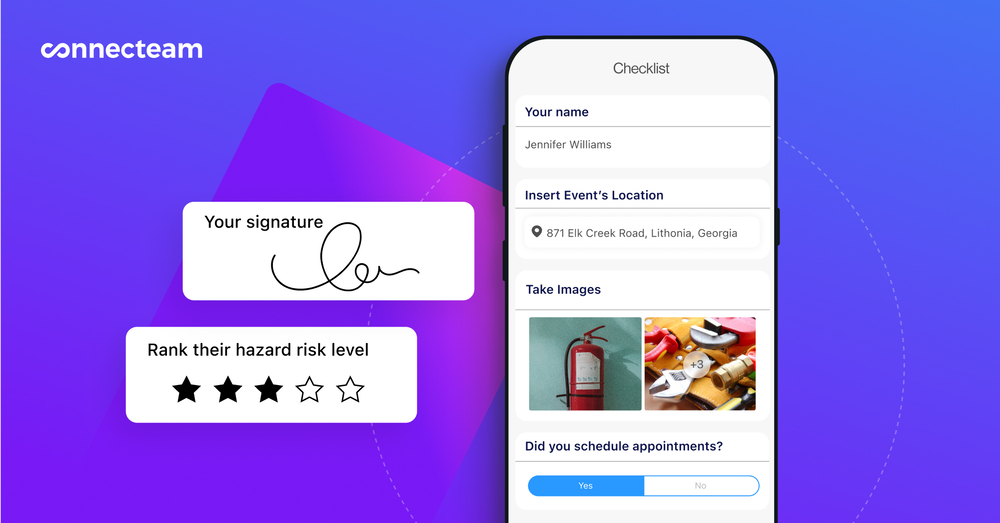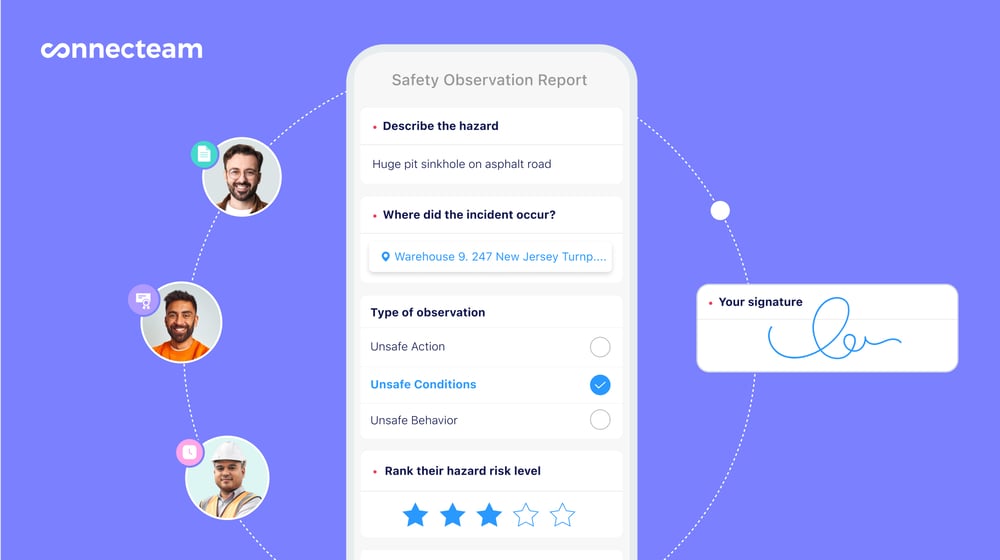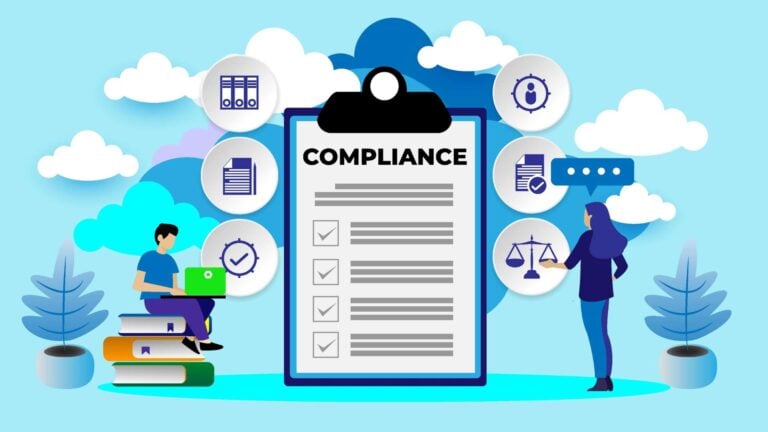Compliance management is essential for business integrity and legal adherence. Implementing a compliance management system (CMS) mitigates risks and ensures operational efficiency.
Key Takeaways
- A CMS ensures adherence to both internal and external regulations, safeguarding organizational compliance.
- Benefits of a CMS include reduced legal risks, enhanced reputation, and improved operational continuity.
- Effective CMS implementation involves assessing your needs, choosing the right model, developing a framework, selecting technology, providing thorough training, and regularly monitoring and updating your system.
When you’re running a business, ensuring compliance is crucial. Compliance isn’t just about adhering to rules. It’s about protecting your company from non-compliance risks, such as breaches of conduct, hefty fines, and legal penalties. This is where a compliance management system (CMS) becomes essential.
A CMS acts as your business’s safety net, helping you and your workers stay compliant with all relevant requirements.
In this guide, you’ll discover the key features of a CMS—from policies and risk assessment to training and documentation. Plus, we share actionable steps for effectively integrating a CMS into your business processes.
What Is a Compliance Management System?
A CMS is a structured set of procedures and processes designed to ensure your organization adheres to external legal and regulatory requirements, as well as internal standards and policies.
While CMSs can be manual or digital, businesses increasingly prefer digital solutions due to their efficiency, accuracy, and ease of use. Implementing a CMS, particularly a digital one, is a fundamental step toward establishing an effective compliance management program.
The elements of a compliance management system generally include policy development, risk assessment, training and communication, internal controls, document management, reporting, monitoring, and auditing.
Common Compliance Management Solutions
There are several common compliance management solutions, which can be broadly categorized into three main types:
- General Compliance Management Software: These provide a generalized set of tools and features for compliance management. This can include things like risk assessments, policy management, training management, and incident management.
- Industry-Specific Compliance Applications: These solutions are designed to fit the needs of specific industries or sectors. For example, there are compliance management solutions specifically for healthcare organizations that help them comply with HIPAA regulations.
- GRC (Governance, Risk Management, and Compliance) Platforms: These platforms provide a more strategic framework for overall compliance management. They can help organizations to identify and manage risks, improve governance, and ensure compliance with regulations.
- Risk Management Tools: These tools help organizations identify, assess, and mitigate risks that could lead to compliance breaches. They often include features for risk analysis, control management, and monitoring.
- Incident Management Systems: Systems used to record, investigate, and resolve compliance incidents or breaches. These solutions help in tracking the progress of incident resolution and reporting to relevant stakeholders.
- Audit and Monitoring Tools: Tools designed to automate the process of auditing and monitoring compliance with internal policies and external regulations. They can help in scheduling audits, tracking findings, and ensuring remedial actions are taken.
Compliance Issues a Compliance Management System Can Address
A CMS helps organizations navigate a wide range of compliance issues, including breaches of the following laws and regulations:
- Employment laws like overtime, minimum wage, and non-discrimination laws.
- Health and safety regulations like the Occupational Safety and Health Administration’s (OSHA’s) guidelines and other industry-specific safety requirements.
- Environmental regulations like the Environment Protection Agency (EPA)’s regulations and other environmental protection standards.
- Financial regulations like those under the Sarbanes-Oxley Act (SOX).
- Privacy laws including employee data protection laws.
- Industry-specific regulations like those affecting healthcare, banking, restaurants, and more.
- Ethical standards and corporate policies, including codes of conduct, ethical guidelines, and corporate policies.
Key Features of an Effective CMS
An effective CMS has these key features.
- Policy and procedure management: Create, organize, centralize, and access all policies and procedures efficiently.
- Audit trails: Ensure accurate tracking of activities, changes, and transactions over time while collecting detailed records of who did what and when. These might include changes to documents or worker activities done within a worker platform.
- Documentation and record keeping: Store and manage all compliance-related documents in one secure location for easy access and control.
- User-friendly document management: Streamline the process for creating, reviewing, and approving documents, including records and reports. Use version control to revert documents to previous versions when necessary. Require e-signatures for clear, auditable proof of decision-making and consent.
- Risk management: Identify, assess, and prioritize compliance risks. The system should offer risk assessment tools, scenario planning, and mitigation strategies.
- Training and communication: Track and manage employee training, record completion, and deliver targeted communication campaigns for continuous awareness of compliance concerns.
- Incident reporting: Establish dedicated channels where internal and external stakeholders—such as employees, customers, and vendors—can report compliance violations. These channels should ensure accessibility and confidentiality.
- Analytics features for monitoring and alerting: Track activities and data in real time to identify potential compliance issues. The system should offer dashboards and data visualization tools to make this easy. It should be capable of issuing alerts for possible compliance breaches.
- Corrective actions: Follow pre-established protocols for resolving compliance breaches.
- Security and data privacy: Feel safer with robust security features (like access control) and data encryption for protecting sensitive information.

7 Benefits of Implementing a Compliance Management System
Here’s why using a CMS is so important.
Avoid legal issues and penalties
Falling short of compliance means risking financial penalties and legal actions. A robust CMS keeps you updated on regulatory changes and automates the process of adjusting your compliance strategies, ensuring you always meet the latest requirements. This reduces the risk of costly fines and other penalties.
Protect your reputation
Any hint of non-compliance can damage your brand’s trustworthiness. Maintaining compliance helps you safeguard your reputation and maintain customer and partner trust.
Minimize operational disruptions
Non-compliance can result in operational hiccups. Regulatory bodies may impose restrictions or halt certain operations until you achieve compliance. A CMS helps avoid these disruptions.
Reduce fraud risk
A solid compliance framework helps detect and prevent fraudulent activities more effectively. It uses internal controls—procedures and mechanisms that defend against internal and external fraud risks—to safeguard your assets and financial integrity.
Increase transparency and accountability
A clear framework for compliance defines roles and responsibilities. This transparency promotes a culture of accountability within the organization, ensuring people at all levels take compliance seriously.
Improve audit readiness
With a CMS, you can store all compliance-related documents in a centralized location to easily manage, access, and update them as needed. A well-organized system with documented procedures, policies, and training records ensures smoother and less stressful external and internal audits.
Protect consumers and employees
Many laws and regulations aim to protect your employees or customers. For instance, overtime regulations ensure fair compensation for extended work hours, while data protection laws safeguard personal information. So, a CMS contributes to a safer, more-ethical business environment.
3 Compliance Management Models
Various approaches to compliance management exist. Each approach has pros and cons, and the best choice depends on your organization’s size, industry, regulatory environment, and culture. Here are 3 commonly used models:
- Top-down model: This approach is effective when tight control and consistency are necessary. For example, in highly regulated industries like pharmaceuticals, a top-down model ensures consistent adherence to critical safety standards across all operations.
- Hands-off model: This approach is best suited for environments where innovation and flexibility are priorities—like tech startups. Here, employees are encouraged to take initiative in their compliance responsibilities, fostering a culture of trust.
- Shared or distributed model: This collaborative approach works well in complex organizations like multinational corporations where different departments or locations face unique regulatory environments. By sharing responsibility, each unit tailors its compliance efforts to its specific needs while aligning with the organization’s overall compliance framework.
Challenges in CMS Implementation
Implementing a CMS can present several challenges. Understanding these obstacles enables you to prepare for and address them effectively. Here are some common challenges you may encounter:
- Employee pushback: Employees may refrain from adopting new procedures and processes, especially if they perceive them as burdensome or disruptive.
- Lack of awareness: Without proper training and communication, employees might not fully understand their compliance obligations, leading to accidental breaches.
- Lack of executive buy-in: Without solid support from leadership, securing the necessary resources and commitment for a successful CMS implementation can be problematic.
- Varying regulations: Keeping up with diverse and ever-changing regulations can be overwhelming, especially for businesses operating in multiple jurisdictions.
- System compatibility: Integrating a CMS with existing systems and workflows can be challenging and require significant technical expertise.
- Resource allocation: Implementing a CMS often requires financial investment in software, staff training, and possibly dedicated compliance personnel. This can be a significant cost for smaller organizations.
- Continuous improvement: A CMS requires ongoing assessment and improvement, which can be difficult to manage consistently.
6 Steps To Implementing a Compliance Management System
Here’s a step-by-step guide to implementing a CMS.
Assess the need for a tailored strategy
Start by identifying the specific legal and regulatory requirements applicable to your industry. For instance, a healthcare provider would consider Health Insurance Portability and Accountability Act (HIPAA) compliance, while a financial institution would consider SOX regulations.
Moreover, assess your current compliance status. This involves reviewing existing policies and procedures, understanding past compliance issues, and identifying gaps. Align your compliance needs with your business objectives. This helps ensure that the CMS supports your business goals rather than hinders them.
Pro Tip
Gain executive buy-in and leadership commitment from the outset by clearly communicating the benefits that align with their vision. Their support can drive the initiative and help with allocating necessary resources.
Choose the right model
Selecting the most-suitable compliance management model is crucial. Consider your organizational culture, regulatory environment, risk profile, and size.
Often, a blend of models provides the flexibility and control you need. For example, you might use blend elements of the top-down and hands-off models to approach industry regulations and internal policies.
Develop the framework
This process involves translating your compliance needs, objectives and model into structured, actionable policies and clear roles within your organization. Here’s how to do this:
- Define clear compliance objectives: Clearly outline what you aim to achieve with your CMS, such as meeting specific regulatory standards, enhancing data security, or ensuring ethical practices.
- Develop policies and procedures based on your compliance needs and objectives. These should be clear, practical, and enforceable. (For example, a restaurant might use checklists to ensure compliance with food safety standards.) Use resources like industry guidelines, legal counsel, and compliance software to aid in this process.
- Develop corrective actions for non-compliance. For example, you might initiate additional compliance training to address specific compliance breaches.
- Establish who’s responsible for each aspect of compliance, from senior management setting the strategic direction to a dedicated compliance officer regularly conducting internal audits. Further, define responsibilities down to the department-specific level to ensure every worker understands the role they play in compliance.

Did You Know?
Connecteam’s digital forms and checklists are great for increasing accountability and ensuring compliance. If you already have a paper form or file, upload or take a picture of it and Connecteam’s AI will automatically convert it into a structured, digital version. You can also build your own forms, checklists, and reports, or use a premade template.
Select the right compliance software
Manual processes involving excessive paper, printing, and storage are costly and inefficient. They also pose challenges in distributing, tracking, and updating policies, with a high risk of errors and delays. These methods also limit the reach of employee training, especially for remote or off-site workers.
Compliance doesn’t have to be a manual slog. Embrace technology to:
- Automate tasks: Free your team from tedious tasks like collecting data for risk assessments.
- Streamline processes: Connect different compliance processes into a seamless workflow. For example, automatically link incident reporting to risk assessment and management actions to quickly identify issues, assess their impact, and implement corrective measures.
- Use data-driven insights: Leverage data analytics to identify trends, predict potential issues, and make informed decisions.
Choosing the right tools and software is crucial for seamless integration with your CMS and business operations. This might require workflow modifications, technology updates, or team restructures.
Did You Know?
Connecteam is a compliance software with unlimited document storage. The built-in expiration dates functionality helps efficiently manage compliance-related documents, ensuring they remain current and relevant.
Implement training and communication
Develop a training program that educates employees about compliance policies, the importance of these policies, and the employees’ roles in maintaining compliance. Mobile compliance training can be particularly effective since it tends to be more accessible and engaging.
Additionally, create an environment where compliance is part of the corporate culture. This involves regular compliance training, open communication, and recognition of compliant behaviors.
Involve employees at all levels in the development and operation of the CMS. Moreover, encourage employees to report potential issues without fear of reprisal. Their insights can provide valuable feedback and help fine-tune the system.
Pro Tip
Consider using a CMS with built-in training capabilities. For example, Connecteam’s training software for employees offers features like the AI Course Creator, quizzes, assignments, and interactive modules, allowing employees to access compliance training right from their mobile devices.

Monitor, review, and update
You must establish effective mechanisms for compliance monitoring, such as periodic audits or performance reviews, and ensure prompt corrective actions for identified issues. Additionally, regularly review and update your CMS to ensure it remains effective and aligned with current regulations and business needs. This could involve annual reviews or updates following significant regulatory changes.
Stay Compliant with Effective Compliance Management Software
By complying with relevant rules, regulations, and standards, you can avoid costly penalties, fines, lawsuits, and reputational damage.
However, compliance isn’t easy to achieve and maintain. You need a robust CMS including policy management, employee training, and more.
Compliance software can automate tasks, monitor compliance risk and performance, and generate reports and audits. Connecteam is a compliance software that can help with various compliance requirements—with capabilities like document management, expiration date setting, audit monitoring, and more. Plus, at an affordable cost, it equips you with other useful features like checklists, mobile training, and task management, making it ideal for managing and reinforcing your compliance strategy.
FAQs
How do you measure the effectiveness of a compliance management system?
Measure the effectiveness of your CMS through regular audits, compliance rate tracking, and evaluations of employee engagement and training effectiveness. Monitoring key performance indicators (like the percentage of compliance goals met) and audit feedback helps assess the CMS’s impact on regulatory adherence and operational efficiency.
How can small businesses benefit from a compliance management system?
A CMS that’s suited to small businesses will enable them to streamline processes, minimize risk exposure, and ensure regulatory compliance. This can help them manage resources more efficiently, maintain a solid reputation, and avoid costly compliance violations.


